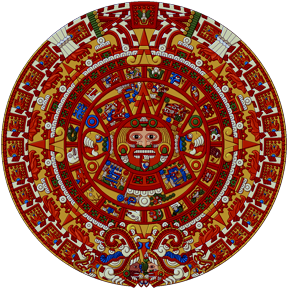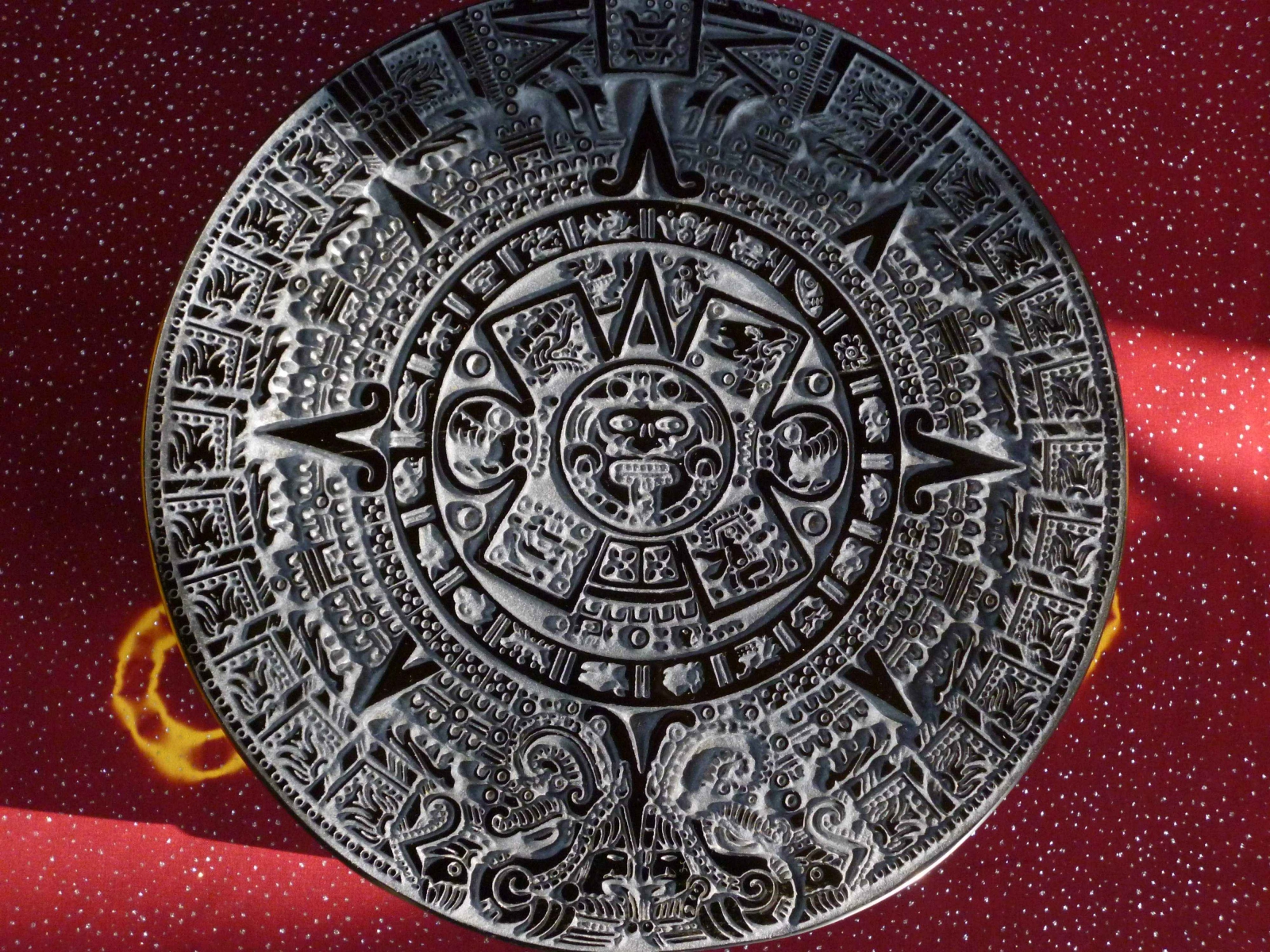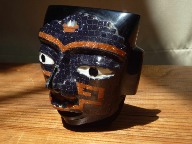Tonalpohualli

Suivez la synchronisation du calendrier aztèque!
El Calendario Azteca
Symbolismo
Video Conferencias de Gnosis
***
Introduction au calendrier aztèque.Pas seulement un calendrier
Mayan Elder- Aztec Calendar is Older Than Aztecs
Mazatzin Reveals Truths of the Aztec Calendar
Il n'y a pas qu'un calendrier aztèque, il existe deux systèmes plus ou moins indépendants. Un calendrier, appelé le xiuhpohualli, a 365 jours. Il décrit les jours et les rituels liés aux saisons et peut donc être appelé l'année agricole ou l'année solaire. L'autre calendrier a 260 jours. En nahuatl, la langue des Aztèques, on l'appelle le tonalpohualli ou nombre de jours. La plupart des informations sur ce site Web font référence au tonalpohualli, qui est le calendrier sacré.
La cosmologie tonalpohualli et aztèque
Pierre du soleil ou la pierre d'Axayacatl, dépeint les 20 jours autour de la divinité Solaire
Une interprétation colorée de la pierre du soleil ou de la pierre d'Axayacatl. Représente les 20 jours autour de la divinité solaire.
Le tonalpohualli, ou compte de jours, a été appelé calendrier sacré parce que son objectif principal est celui d'un outil divinatoire. Il divise les jours et les rituels entre les divinité. Pour l’esprit aztèque, c’est extrêmement important. Sans cela, le monde finirait bientôt. Selon la cosmologie aztèque, l'univers est dans un équilibre très délicat. Les forces divines opposées se disputent le pouvoir. Cet équilibre est constamment menacé d'être perturbé par les pouvoirs changeants des divinités, des forces élémentaires qui influencent nos vies. Cette lutte ne peut être gagnée par aucune divinité.
La notion selon laquelle tout se compose en définitive de deux forces opposées est essentielle à la vision du monde aztèque. Le monde est toujours sur le point de sombrer dans une guerre spirituelle, une guerre de divinités en compétition pour le pouvoir suprême. Pour éviter que cela ne se produise, ils ont reçu leur propre espace, leur propre temps, leurs propres groupes sociaux, etc., pour régner. Le tonalpohualli nous dit comment le temps est divisé entre les divinités.
Le système du tonalpohualli
Le système du tonalpohualli peut être mieux compris en imaginant deux roues reliées l’une à l’autre. Une roue porte les chiffres "un" à "treize". La deuxième roue a vingt symboles. Dans la situation initiale, le numéro "un" est associé au premier symbole. C'est le premier jour du tonalpohualli. Maintenant, les roues commencent à bouger et le numéro "deux" se combine avec le deuxième glyphe. C'est le deuxième jour. Après quatorze jours, une semaine aztèque (trecena en espagnol) de treize jours s'est écoulée. La roue avec les chiffres indique à nouveau le numéro "un". L'autre roue affiche maintenant le quatorzième symbole. Après 260 jours, les deux roues sont revenues à leur position initiale. La tonalpohualli recommence à zéro.
Temps de division entre les divinités
Un jour (tonalli) dans le tonalpohualli se compose d’un nombre et d’un symbole ou d’un signe symbolique. Chaque dayign est dédié à un dieu ou à une force élémentaire, fournisseur de l’énergie vitale tonalli (Shadow Soul) pour la journée. Les vingt daysigns et leurs dieux sont successivement:
signification des symboles et divinités du calendrier azteque

Calendrier Azteque gravé sur pierre fine volcanique obsidienne dorée
Introduction to the Aztec Calendar
Not just one calendar
There is not just one Aztec calendar, there are two more or less independent systems. One calendar, called the xiuhpohualli, has 365 days. It describes the days and rituals related to the seasons, and therefor might be called the agricultural year or the solar year. The other calendar has 260 days. In Nahuatl, the language of the Aztecs, it is called the tonalpohualli or, the day-count. Most information on this website refers to the tonalpohualli, which is the sacred calendar.
The tonalpohualli and Aztec cosmology
A colored rendition of the Sun Stone, or the Stone of Axayacatl. Depicts the 20 daysigns around the Sun God.
The tonalpohualli, or day-count, has been called a sacred calendar because its main purpose is that of a divinatory tool. It divides the days and rituals between the gods. For the Aztec mind this is extremely important. Without it the world would soon come to an end. According to Aztec cosmology, the universe is in a very delicate equilibrium. Opposing divine forces are competing for power. This equilibrium is in constant danger of being disrupted by shifting powers of the gods, of the elemental forces that influence our lives. This struggle cannot be won by any god.
The notion that everything ultimately consists of two opposing forces is essential to the Aztec worldview. The world is always on the brink of going under in a spiritual war, a war of gods competing for supreme power. To prevent this from happening, the gods have been given their own space, their own time, their own social groups, etcetera, to rule over. The tonalpohualli tells us how time is divided among the gods.
The system of the tonalpohualli
The system of the tonalpohualli can be best understood by imagining two wheels that are connected to each other. One wheel has the numbers "one" to "thirteen" written on it. The second wheel has twenty symbols on it. In the initial situation, number "one" combines with the first symbol. This is the first day of the tonalpohualli. Now the wheels start moving and number "two" combines with the second glyph. This is the second day. After fourteen days, an Aztec week (trecena in Spanish) of thirteen days has passed. The wheel with the numbers shows number "one" again. The other wheel now shows the fourteenth symbol. After 260 days, the two wheels have returned to their initial position. The tonalpohualli starts all over again.
Dividing time among gods
A day (tonalli) in the tonalpohualli consists of a number and a symbol or daysign. Each daysign is dedicated to a god or elemental force, the provider of tonalli (Shadow Soul) life energy for the day. The twenty daysigns and their gods are successively:
meaning of the symbols and deities of the Aztec calendar
Revelation symétrique
The Aztec Calendar and HOW TO READ IT
Mots clés :

